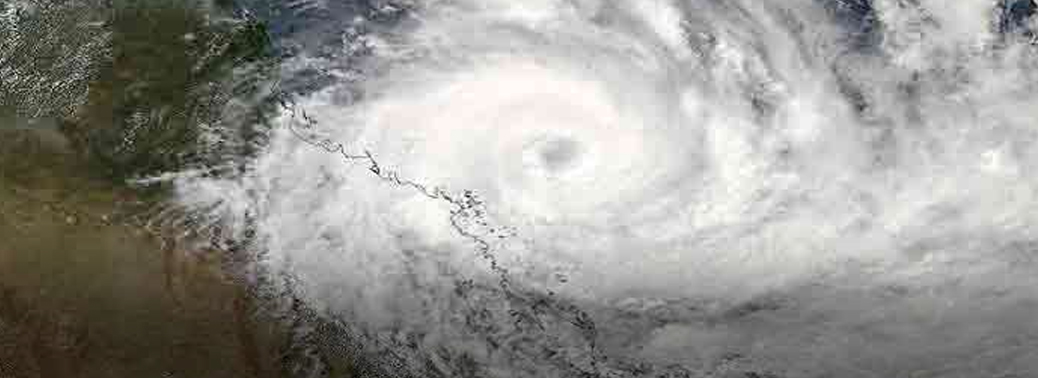Cyclone Daye
05, Sep 2018

Prelims level : Environment
Mains level :
Why in news?
- Heavy rainfall due to cyclonic storm Daye has brought normal life to a standstill in Odisha, leaving several parts in the state waterlogged. Gates of the Upper Kolab Dam in Karapur were opened to maintain the water level.
Cyclone Daye:
- After crossing the Odisha coast, the track of the latest Bay of Bengal cyclone will head in a classical west-north-west direction (diagonal across Central and Western India) into the weekend and early next week. • To be named ‘Daye’ (Myanmar language) as per protocol, the cyclone is likely to be the last sea-based system to emerge during the 2018 monsoon. But it will drop considerable rain along the track reaching right into North Gujarat and Rajasthan.
Cyclone:
- A cyclone is a low-pressure area. A cyclone’s center (often known in a mature tropical cyclone as the eye), is the area of lowest atmospheric pressure in the region.
- Near the center, the pressure gradient force (From the pressure in the center of the cyclone compared to the pressure outside the cyclone) and the force from the Coriolis effect must be in an approximate balance, or the cyclone would collapse on itself as a result of the difference in pressure.
- Because of the Coriolis effect, the wind flow around a large cyclone is counter clockwise in the Northern Hemisphere and clockwise in the Southern Hemisphere.
- In the Northern Hemisphere, the fastest winds relative to the surface of the Earth therefore occur on the eastern side of a northward-moving cyclone and on the northern side of a westward-moving one; the opposite occurs in the Southern Hemisphere.
- In contrast to low pressure systems, the wind flow around high pressure systems are clockwise (anticyclonic) in the northern hemisphere, and counter clockwise in the southern hemisphere.
- Tropical cyclogenesis, the development of a warm-core cyclone, begins with significant convection in a favourable atmospheric environment.
- There are six main requirements for tropical cyclogenesis:
- sufficiently warm sea surface temperatures,
- atmospheric instability,
- high humidity in the lower to middle levels of the troposphere
- enough Coriolis force to develop a lowpressure center
- A pre-existing low-level focus or disturbance
- low vertical wind shear.
Naming of the cyclone:
- For the Indian Ocean region, deliberations for naming cyclones began in 2000 and a formula was agreed upon in 2004.
- Eight countries in the region – Bangladesh, India, Maldives, Myanmar, Oman, Pakistan, Sri Lanka and Thailand – all contributed a set of names which are assigned sequentially whenever a cyclonic storm develops.
- The list of names India has added to the database includes Agni, Akash, Bijli, Jal (cyclones which have all occurred since 2004). The Indian names in the queue are Leher, Megh, Sagar and Vayu.






